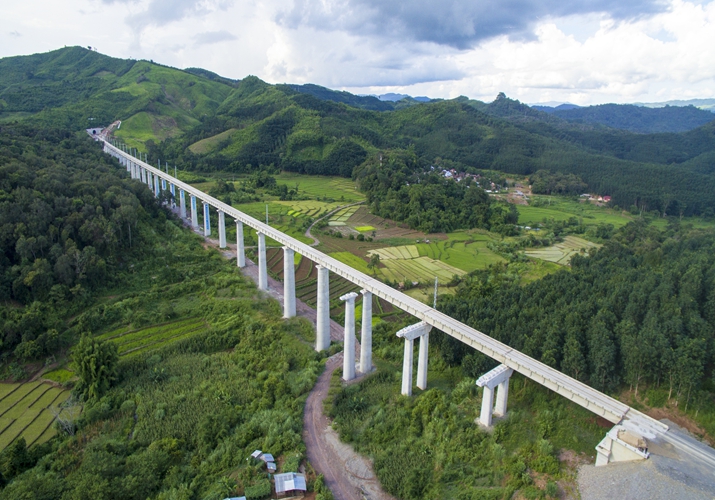| World |
| Belt and Road Initiative aims to promote connectivity, win-win cooperation and common prosperity | |
|
|
 Members of a Chinese expert team sent to Italy to help the country fight the novel coronavirus pose for a photo with local doctors in Padua, Italy, on March 18 (XINHUA)
 The Belt and Road Initiative, aiming to build a trade and infrastructure network connecting Asia with Europe and Africa along and beyond the ancient Silk Road trade routes, has become an important platform for participating countries to fight the novel coronavirus disease (COVID-19) pandemic. China and other participants have been helping each other in the combat: cooperating in response and control through timely sharing of information, diagnosis and treatment experience and best practices, strengthening and upgrading public health systems, promoting dialogue among health experts, and providing assistance to countries in need. The Belt and Road Initiative, aiming to build a trade and infrastructure network connecting Asia with Europe and Africa along and beyond the ancient Silk Road trade routes, has become an important platform for participating countries to fight the novel coronavirus disease (COVID-19) pandemic. China and other participants have been helping each other in the combat: cooperating in response and control through timely sharing of information, diagnosis and treatment experience and best practices, strengthening and upgrading public health systems, promoting dialogue among health experts, and providing assistance to countries in need. Meanwhile, the initiative has helped promote resumption of production and economic recovery. It is also expected to create new growth drivers. For instance, the Digital Silk Road program focuses on cooperation in areas such as big data and smart cities, while the Health Silk Road program explores opportunities in the medical and health field. At a time when the pandemic continues to spread in many parts of the world, the initiative has boosted confidence about the world economy and injected impetus into global recovery.
 A section of the China-Laos Railway in north Laos on July 29. The project, which started in December 2016, is scheduled to be completed in December 2021 (XINHUA)
Great benefits
There is a Chinese saying, "If you want to get rich, you should build roads first." That is to say, if a country wants to prosper, it must first facilitate unimpeded transportation, so that its products can be shipped out and products from other parts of the world can be brought in. The Belt and Road Initiative is helping participating countries achieve joint development and common prosperity through promoting policy coordination, infrastructure connectivity, unimpeded trade, financial integration and people-to-people bonds.
The initiative has benefited participating countries, with some projects already successfully launched. In addition to a railway linking Laos with China, Chinese enterprises have undertaken coal and electric power integration projects, hydropower stations and the Saysettha Comprehensive Development Zone in the Southeast Asian country. Other signature Belt and Road projects include the China-Thailand Railway, the industrial parks jointly built by China and Malaysia, and the China-Belarus Industrial Park. The Piraeus Port in Greece, once on the verge of bankruptcy, has become a hub of maritime transportation between Asia, Europe and Africa. Chinese enterprises have also built the Zemun-Borca Bridge in Serbia and a railway in Montenegro.
Since the initiative was first proposed in 2013, trade between China and members of the Association of Southeast Asian Nations (ASEAN) has grown rapidly. In the first half of 2020, bilateral trade totaled 2.09 trillion yuan ($302.4 billion), a year-on-year increase of 5.6 percent, accounting for 14.7 percent of China's total imports and exports. ASEAN has overtaken the EU as China's largest trading partner.
The China-Europe freight rail service, a significant part of the Belt and Road Initiative, has given a strong boost to trade between the two sides. In the first half of the year, freight trips between China and European countries reached 5,122, up 36 percent over the same period last year. The total volume of goods shipped reached 461,000 twenty-foot equivalent units, a year-on-year increase of 41 percent.
On March 21, a China-Europe cargo train departed from Yiwu, the world's largest trading center for daily consumer goods in Zhejiang Province, east China, carrying supplies for tackling COVID-19. It was the first such train to deliver China-made personal protective equipment and other critical supplies to Europe. By the end of June, the China-Europe cargo trains had delivered 3.67 million anti-pandemic items.
Facts have proved that the Belt and Road Initiative has not only bolstered trade between China and other participating countries but also benefited people in these countries by creating employment and boosting other aspects of economic development, thus improving their livelihood.
Win-win solution
Since the launch of the Belt and Road Initiative, it has faced skepticism. Some people doubted whether it could be implemented at all. Others regard it as a reflection of China's geopolitical ambition and argue that it would create a "debt trap" for other participating countries and thus constitutes an economic aggression. Those who hold such views do not understand China's social system, national conditions and cultural characteristics.
The initiative is not meant to challenge the existing global economic order, nor do Chinese firms aspire to dominate global industrial and supply chains. Chinese enterprises investing overseas strictly abide by the laws of host countries and follow market rules. China has no intention to vie for world dominance either. Chinese leaders have repeatedly declared that China will never seek hegemony.
Some people may wonder how China can be an exception to the argument that a strong country will inevitably seek hegemony. The answer lies in its social system as well as its cultural roots.
China follows a socialist democratic system featuring citizens' full participation in the discussion of state affairs, political consultation between the ruling Communist Party of China and non-communist parties, and democratic elections. A citizen can put forward opinions and make suggestions to central and local governments and legislatures through various channels. China's economy features a mixed public and private ownership dominated by public ownership. There is no monopoly capital consortium to control the economy. Unlike monopoly enterprises in some countries that seek to maximize their own interests, Chinese state-owned enterprises serve national development and improvement of people's livelihood. This economic structure, coupled with the socialist system, determines that a rising China will not invade, plunder or exploit other countries.
In terms of cultural roots, more than 2,000 years ago, Chinese sages Lao Tzu, Confucius and Mencius elaborated on such principles as harmony without uniformity, benevolence, righteousness and honesty, and kindness.
The philosophy of harmony states the universe changes constantly, so we should understand and conform to natural laws, and seek truth from facts. The traditional Chinese dialectic thoughts of yin and yang stress that we should see both the positive and negative sides of things and avoid extreme and absolute thinking.
These principles underline the importance for people to act with benevolence, uphold the sense of justice, honesty and trustworthiness, modesty and prudence, and respect others. If a country pursues its own interests at the expense of others, it is hegemonic.
China's traditional thoughts of harmony, peaceful coexistence and win-win cooperation are the bedrock of the Belt and Road Initiative and the vision of a community with a shared future for humanity. China's cultural roots suggest that it will never seek hegemony, and it is and will be a responsible major country contributing to the peaceful development of mankind.
The author is a professor at the Institute of International Relations, Tsinghua University
(Print Edition Title:Road to Peace and Development)
Copyedited by Madhusudan Chaubey
Comments to wanghairong@bjreview.com
|
|
||||||||||||||||||||||||||||||
|
